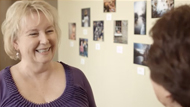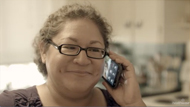Heart-Healthy Lifestyle
Topic Overview
You can help keep your heart and blood vessels healthy by taking steps toward a healthier lifestyle. These healthy habits include not smoking, eating right, exercising regularly, staying at a healthy weight, and getting the screening tests you need.
A heart-healthy lifestyle is important for everyone, not just for people with existing health problems. It can help you keep your heart and blood vessels healthy. If you already have heart or blood vessel problems, such as high cholesterol or high blood pressure, a healthy lifestyle can help you lower your risk of a heart attack and stroke.
If you have children, you can be their healthy role model. If your habits are healthy, your children are more likely to build those habits in their own lives.
Don't smoke
Everyone who uses tobacco would benefit from quitting. When you quit smoking-no matter how old you are-you will decrease your risk of heart attack, stroke, and many other health problems. For help with quitting smoking, see these topics:
- Quitting Smoking
- Quitting Smokeless Tobacco
- How Does Smoking Affect Your Lifespan?
- Quitting Smoking: Should I Use Medicine?
Eat healthy foods
Eating healthy foods is one of the best things you can do to prevent and control many health problems, including heart and blood vessel disease. For help with healthy eating, see these topics:
- Dietary Guidelines for Good Health
- Developing a Plan for Healthy Eating
- Quick Tips: Adding Fruits and Vegetables to Your Diet
- Comparing Heart-Healthy Diets (What is a PDF document?)
Be active
Improving your fitness is good for your heart and blood vessels, as well as the rest of your body. Being active helps lower your risk of health problems. And it helps you feel good. For more information about being active, see these topics:
Reach and stay at a healthy weight
Staying at a healthy weight is also part of a heart-healthy lifestyle. Read more in these topics about reaching and staying at a healthy weight:
Get screening tests
Seeing your doctor regularly and getting screening tests is important. The sooner your doctor diagnoses a disease, the more likely it can be cured or managed. To reduce your risk of heart and blood vessel problems, be sure to keep an eye on your cholesterol and blood pressure. The tests you might have to check your risk for heart and blood vessel problems depend on your age, health, gender, and risk factors. Talk to your doctor to find out which tests are right for you.
Health Tools
Health Tools help you make wise health decisions or take action to improve your health.
Related Information
References
Other Works Consulted
- Eckel RH, et al. (2013). 2013 AHA/ACC guideline on lifestyle management to reduce cardiovascular risk: A report of the American College of Cardiology/American Heart Association Task Force on Practice Guidelines. Circulation. http://circ.ahajournals.org/content/early/2013/11/11/01.cir.0000437740.48606.d1.citation. Accessed December 5, 2013.
- Expert Panel on Integrated Guidelines for Cardiovascular Health and Risk Reduction in Children and Adolescents (2011). Expert panel on integrated guidelines for cardiovascular health and risk reduction in children and adolescents: Summary report. Pediatrics, 128(Suppl 5): S213-S256.
- Whelton PK, et al. (2017). 2017 ACC/AHA/AAPA/ABC/ACPM/AGS/APhA/ASH/ASPC/NMA/PCNA guideline for the prevention, detection, evaluation, and management of high blood pressure in adults. Journal of the American College of Cardiology, published online November 13, 2017. DOI: 10.1016/j.jacc.2017.11.006. Accessed November 20, 2017.
Credits
ByHealthwise Staff
Primary Medical Reviewer E. Gregory Thompson, MD - Internal Medicine
Martin J. Gabica, MD - Family Medicine
Kathleen Romito, MD - Family Medicine
Specialist Medical Reviewer Adam Husney, MD - Family Medicine
Current as ofDecember 19, 2017
- Top of Page
Next Section:
Health Tools
Previous Section:
Topic Overview- Top of Page
Next Section:
Related Information
Previous Section:
Health Tools- Top of Page
Next Section:
References
Previous Section:
Related Information- Top of Page
Next Section:
Credits
Previous Section:
References- Top of Page
Current as of: December 19, 2017

